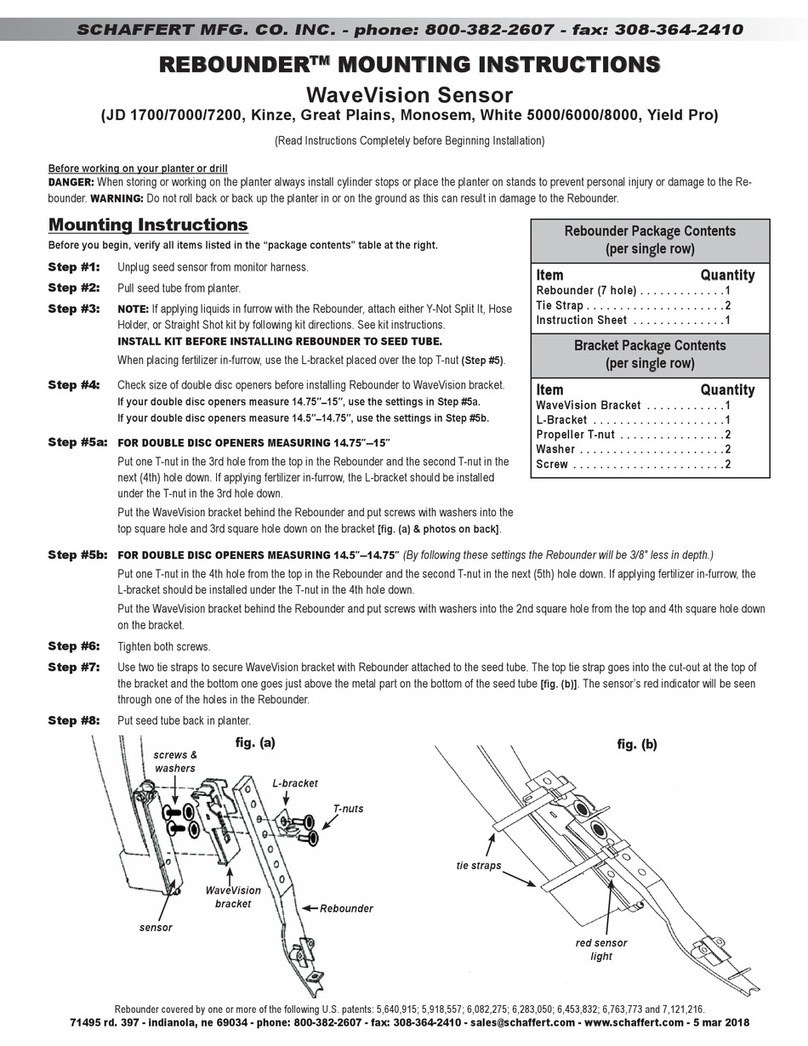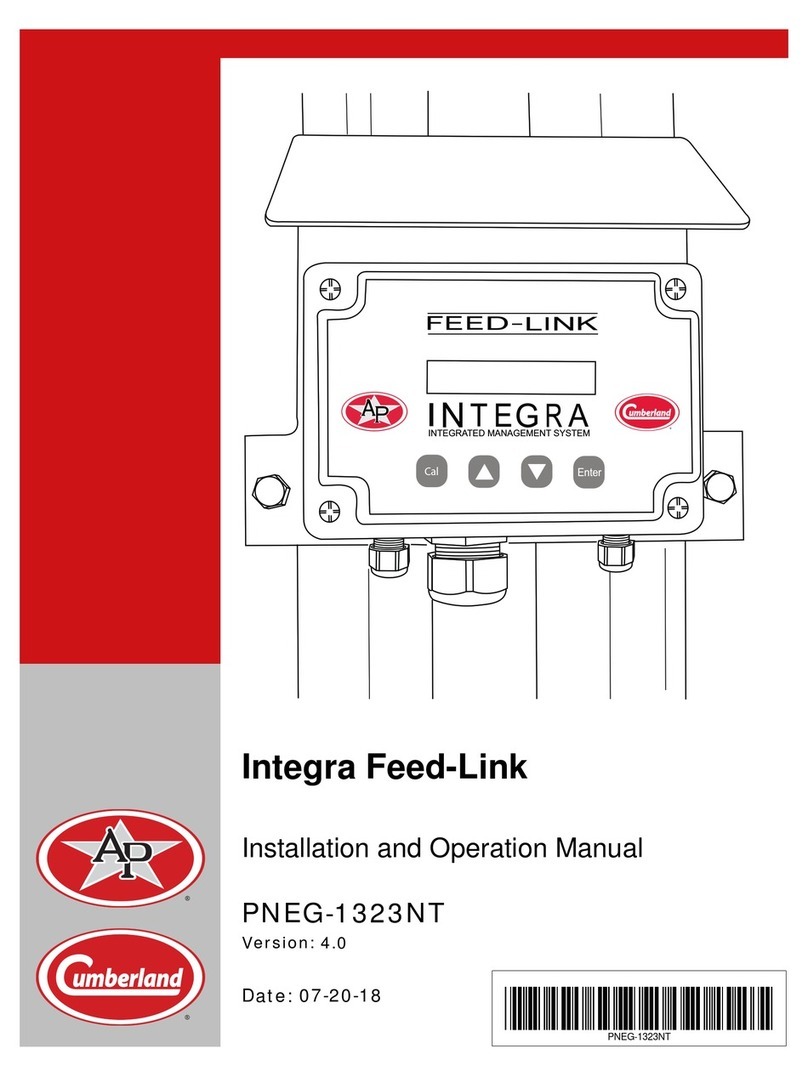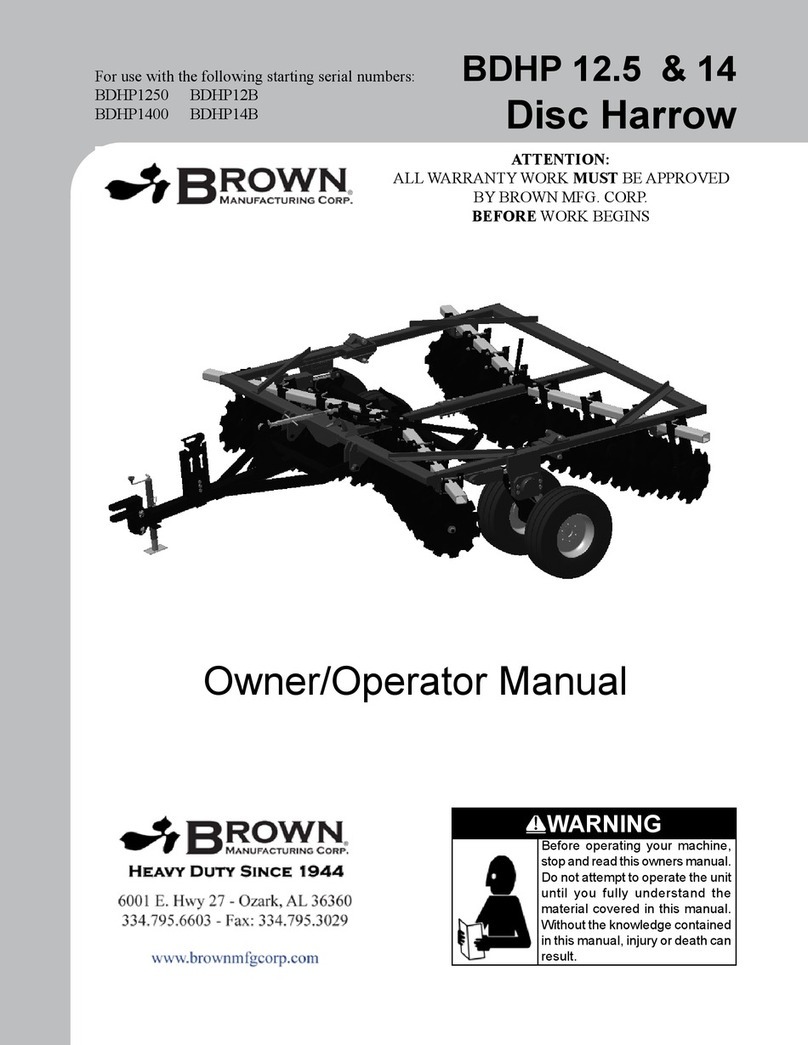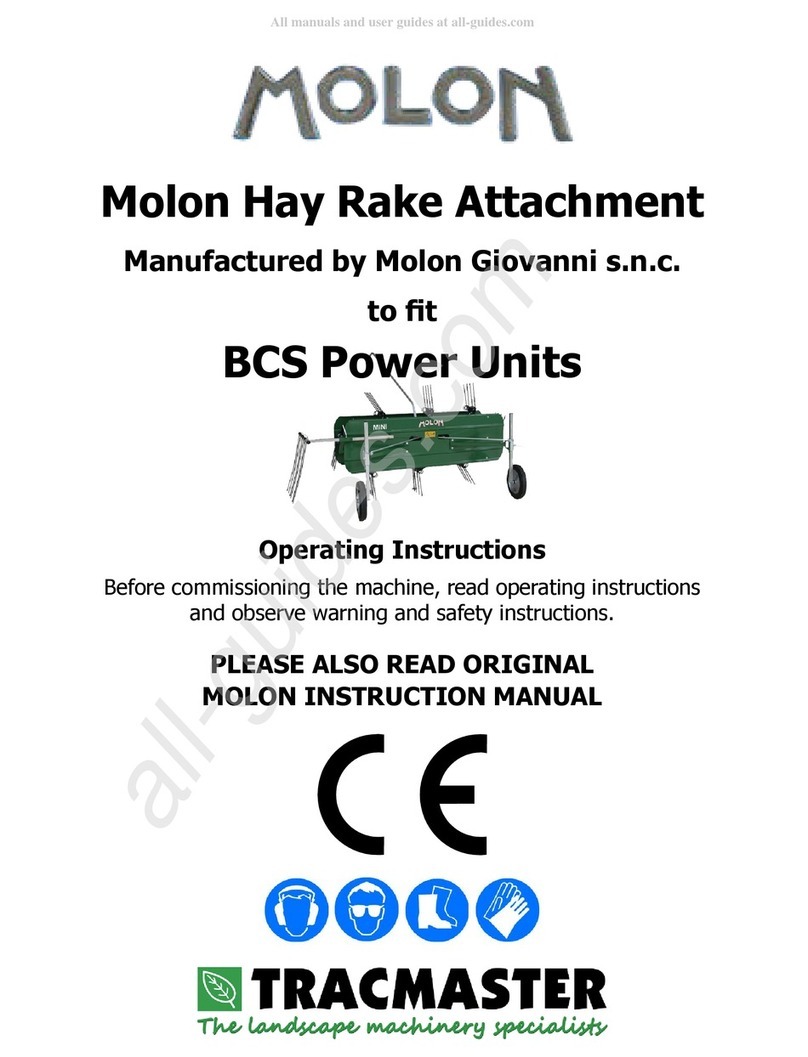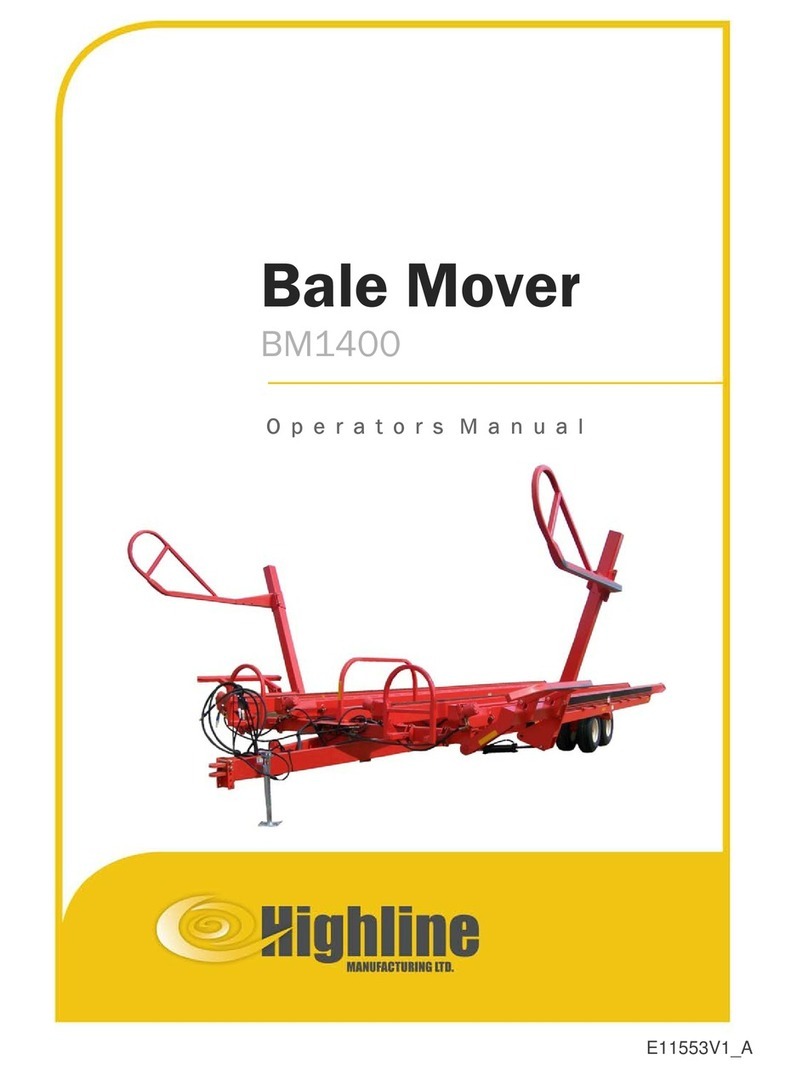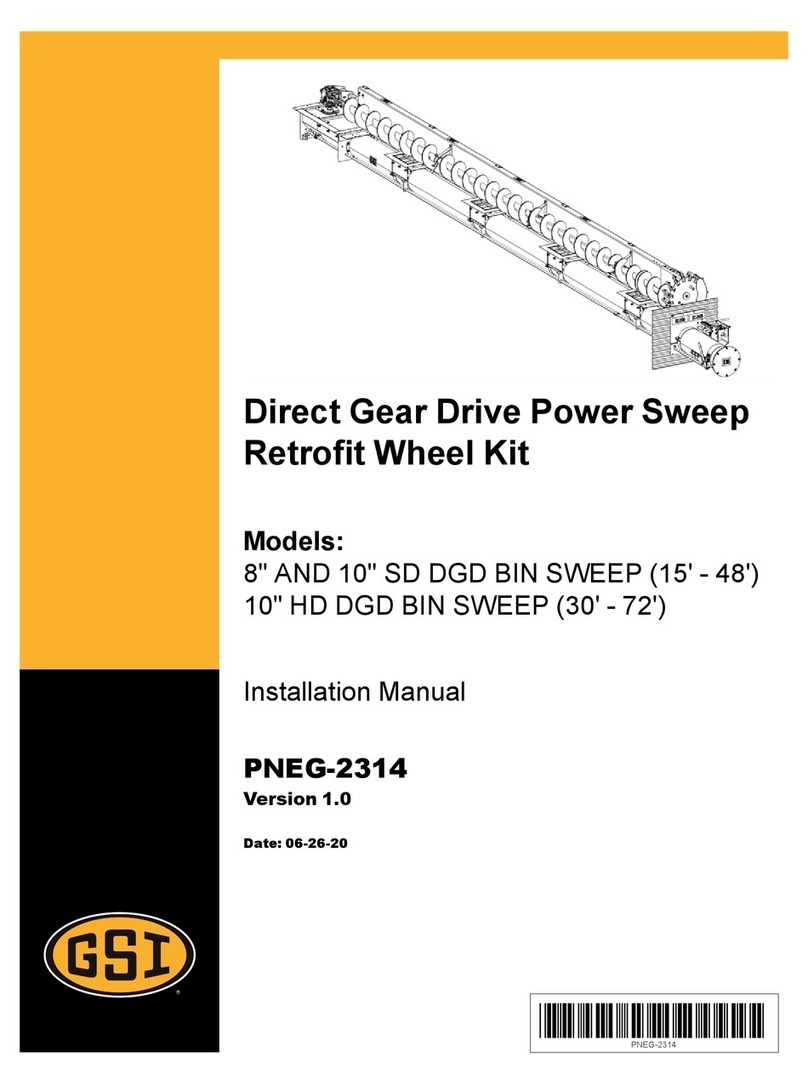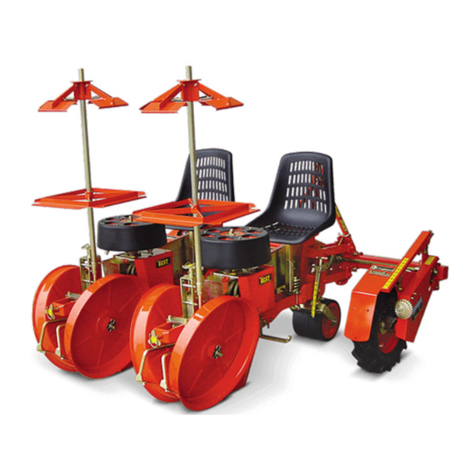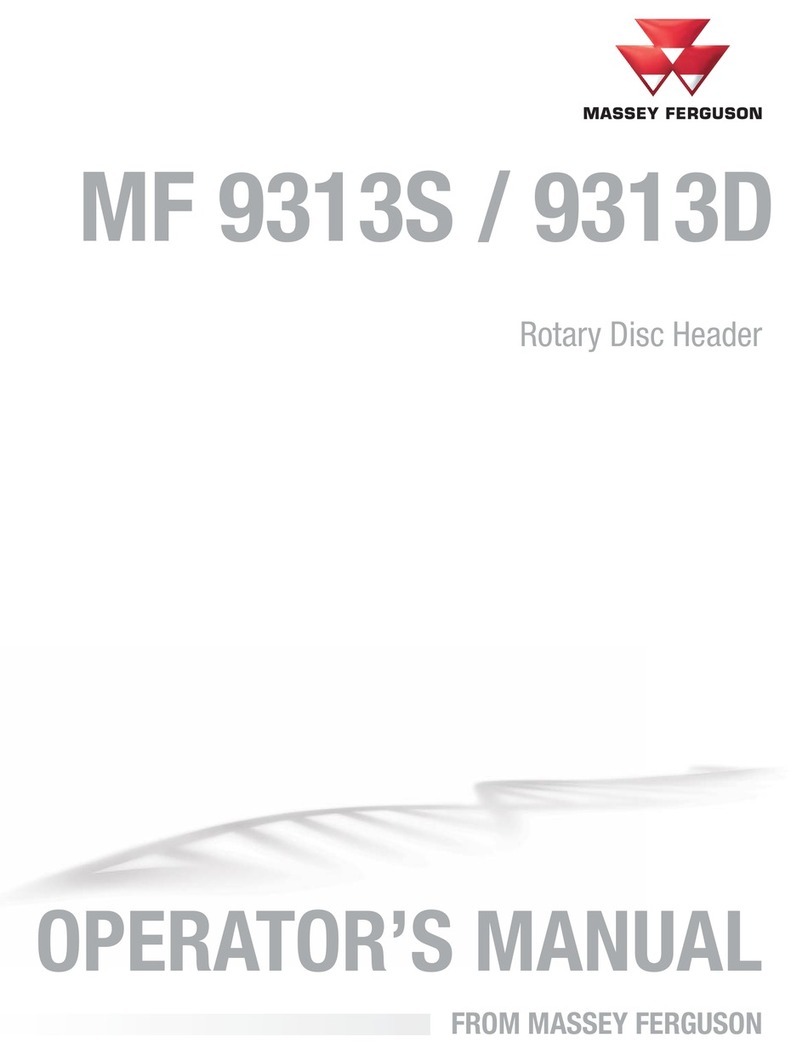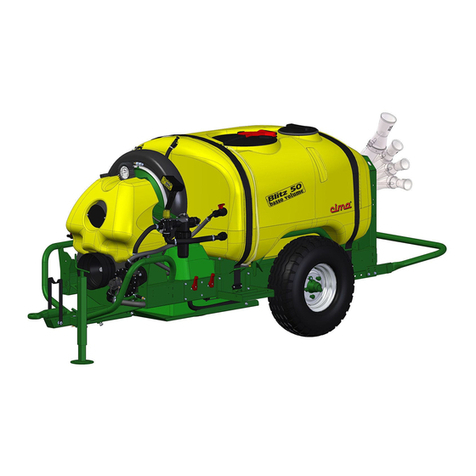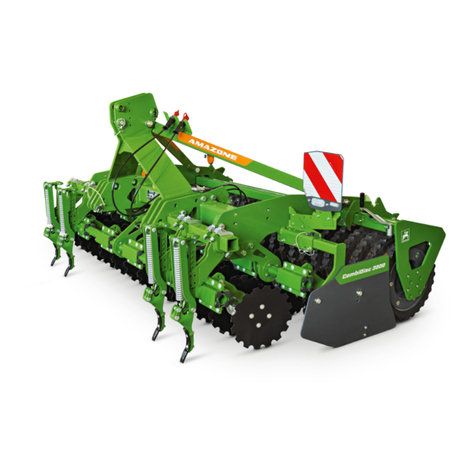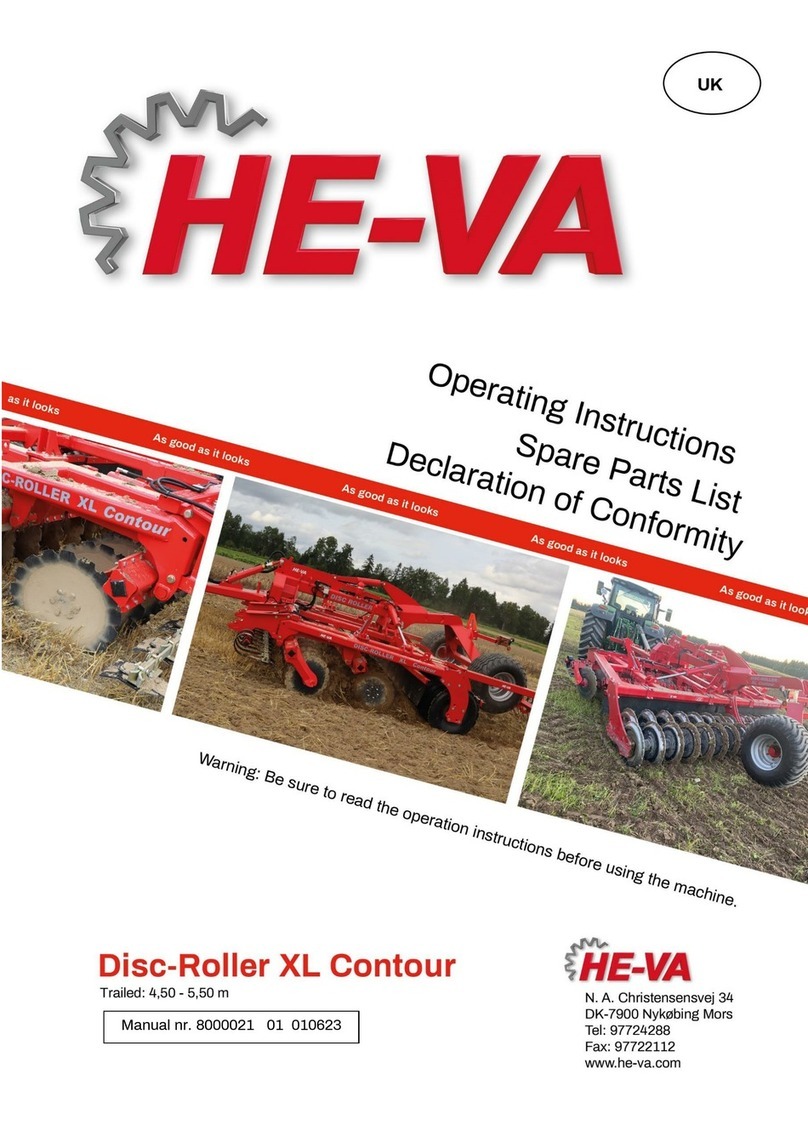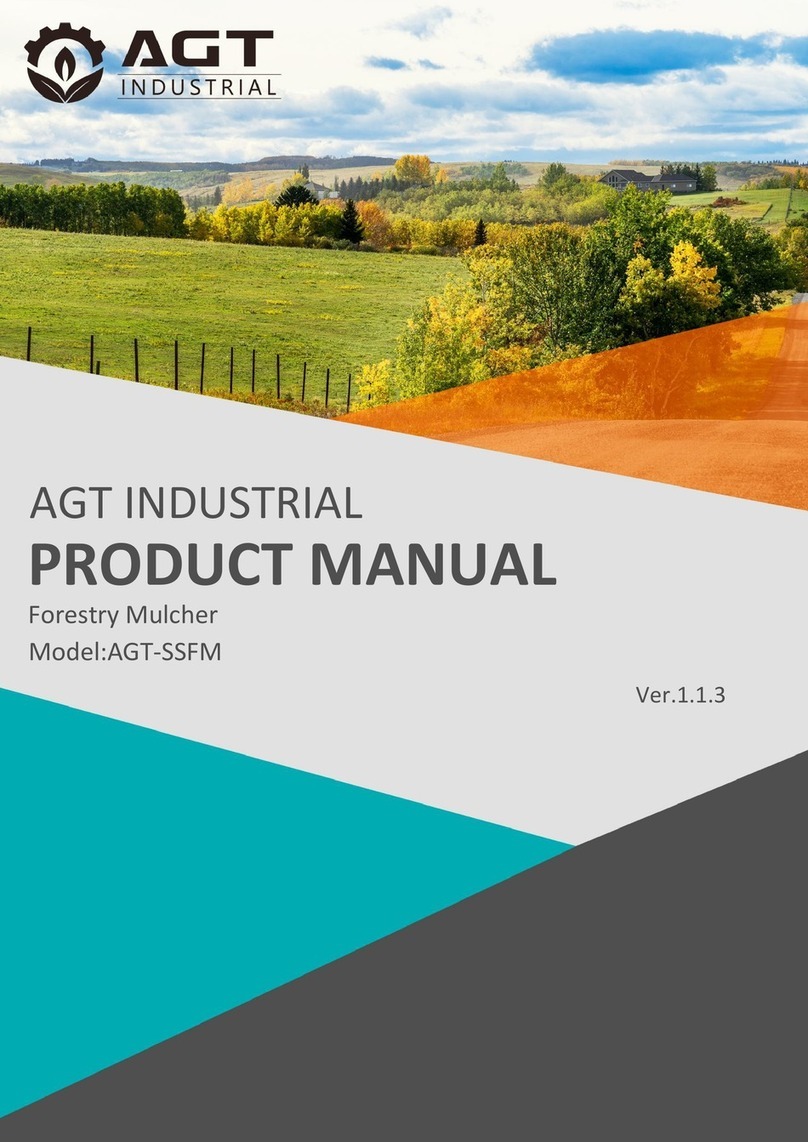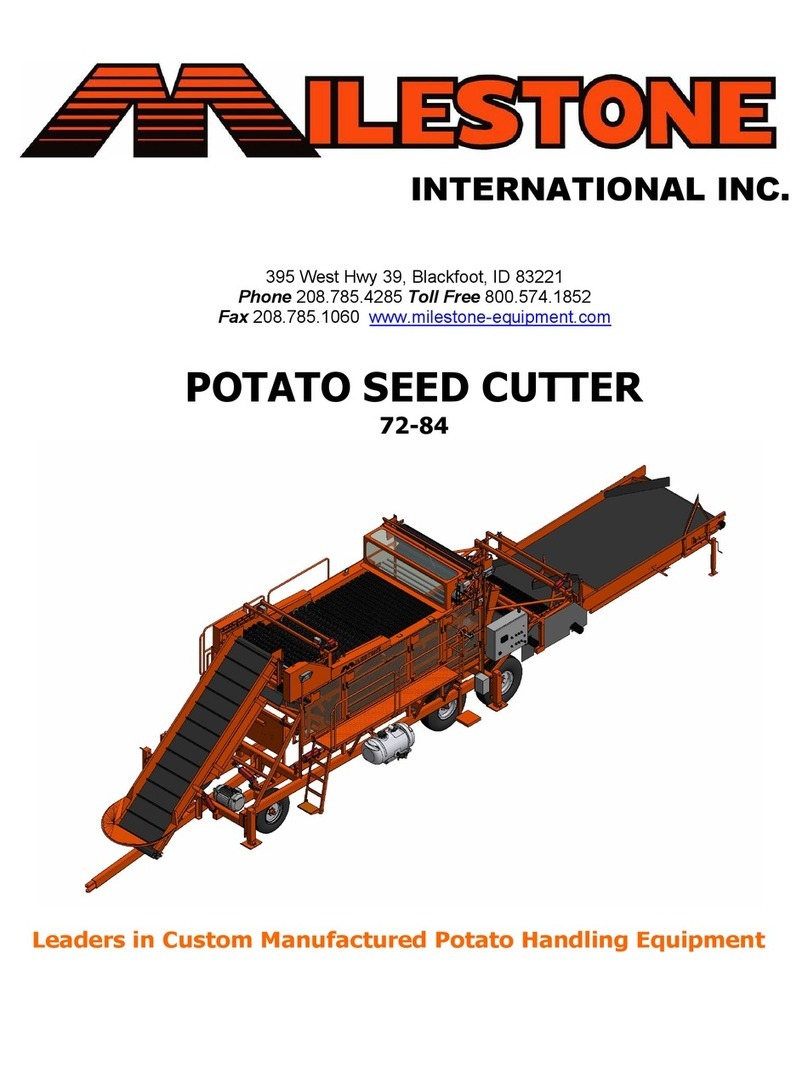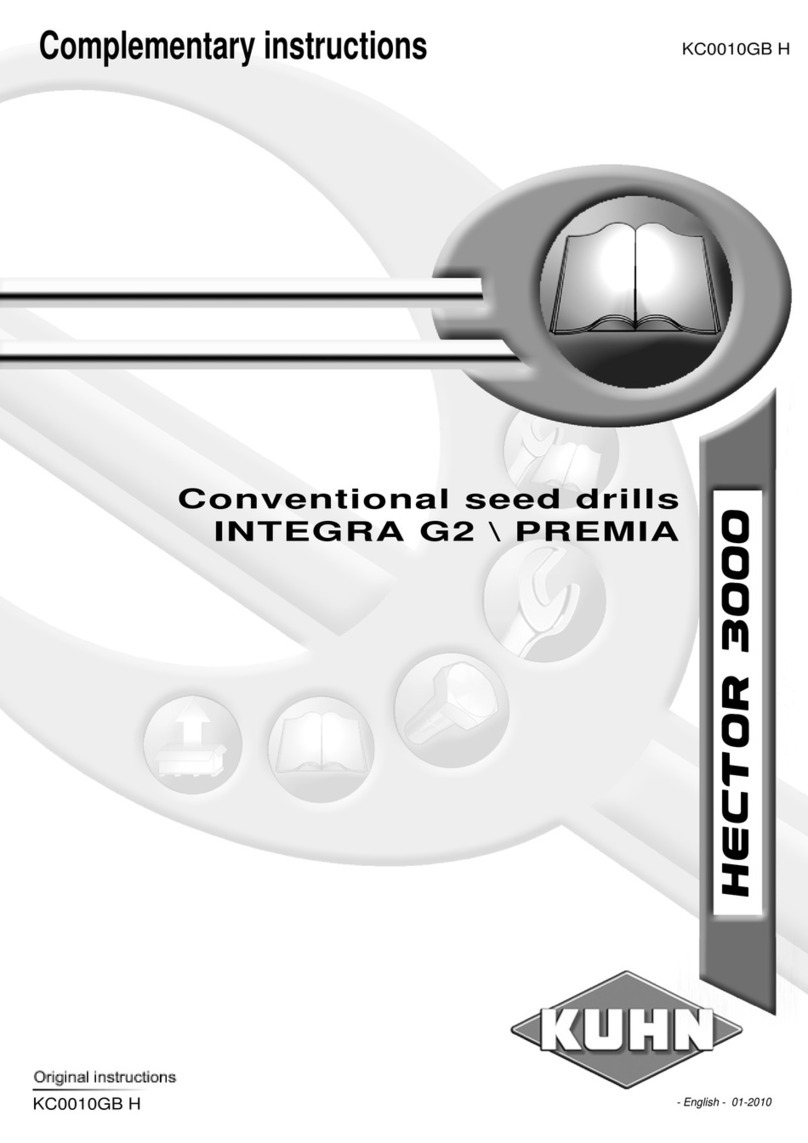4
4. General information
Instructions and documents that are included with the cleaning robot: User manual.
The user manual, together with help text in the Operator panel, includes all the information needed for preparing,
making recordings (teaching), managing locations, programs and recipes, performing and ending a cleaning process.
It also includes necessary information on how to use the robot in the best and safest way.
Short functional description
The cleaning robot obtains its 24-volt power from two 12-volt lead acid batteries. The robot cleans with high-
pressure water (warm or cold) with or without additives. The water is supplied from an external high-pressure water
supply via a 50 m hose installed on a hose reel that is operated separately by the robot according to how the robot
moves. The cleaning is carried out by a telescopic arm, moveable in all directions, with a maximum reach of 4015
mm (effective working range including the water jet = 6000 mm). By using the joystick, you can teach the robot to
move and clean in a satisfactory way. After this teaching operation the robot will be able to carry out the moves on
its own as many times as are necessary to achieve satisfactory cleaning.
5. Starting the robot
The main switch is found on the right side of the operatorspanel.
When charging the batteries, the cleaning robot must be switched off.
The batteries cannot be charged when the robot is on.
Starting the system
When the robot is switched on, the startup process takes
about 30 seconds. When the picture to the right is shown
the robot is ready to operate.
Every screen have a ?-mark. When pressing and holding
that button help text concerning this particular screen will
be displayed.
6. Moving the robot
Manual mode
Manual mode means using the cleaning robot without a previous teaching process. Manual mode is used for
example when the robot is moved from its storage place to the house to be cleaned. Before moving the robot should
be turned On. We recommend that you use manual mode to become familiar with the joystick and the different
movements.
The robot can be manually moved either by manpower or by using the motors for transport. For unpowered
transport, the robot is declutched using the clutch handle on the right-hand side of the handlebar. The robot can also
be manually operated using the transport motor from the operator panel or the joystick.
Transport wheel
To make it easier moving or turning the robot, the transport wheel can be used, see Picture 2. This is controlled on
the manual screen.
